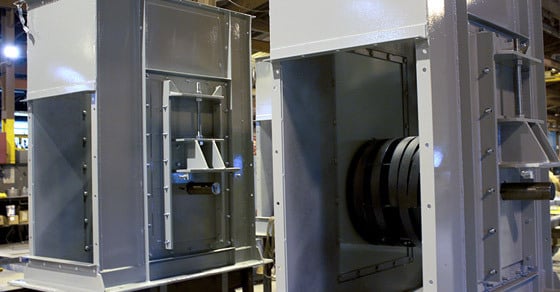Bucket elevators provide vertical handling solutions to every industry from mining to specialty chemicals, and can be configured to suit a range of handling needs, making them the equipment of choice for most vertical handling applications.
The diversity of bucket elevators often leads to questions during the selection process and in determining the best elevator configuration for a given project.
The selection and design of a bucket elevator is a process we regularly guide our clients through. The following are the most frequently asked questions we receive from clients looking at bucket elevators.
How does a bucket elevator work?
A bucket elevator consists of several buckets mounted onto either a chain or belt loop which is fitted onto two pulleys. A drive assembly at the head pulley causes the pulleys to rotate which moves the buckets up one side, over the head pulley, and down the other side.
Depending on the type selected, the elevator can either be loaded from a chute and discharged into another chute (continuous), or it can be designed to scoop material from the boot and throw material into a chute as it passes over the head pulley (centrifugal).
In either case, bucket elevators provide high-capacity vertical handling for nearly all types of material.
Is the bucket elevator a good fit for handling my material?
Bucket elevators can handle almost any flowable bulk solid. They are regularly used for efficient vertical conveying of ores, aggregates, fertilizers, chemicals, biomass, and more. The only time bucket elevators are not a fit is when the material to be conveyed is sticky or in the form of a sludge.
These types of material generally do not discharge well from buckets, instead sticking and causing issues such as reduced capacity, buildup, clogging, and even putting additional strain on elevator components.
What size bucket elevator do I need?
While it is dependent on the specific material, bucket elevators can generally be designed to handle anywhere from 10 TPH to 650 TPH.
Bucket elevator size is based on several factors – most importantly, material bulk density, desired capacity, and elevator discharge height. Appropriate sizing is a matter of finding the right combination of chain or belt speed, elevator style (centrifugal or continuous), bucket size, and bucket spacing.
As such, there are no “hard rules” for sizing a bucket elevator based on the material; engineers use the variables above, in combination with the material data, to calculate the optimal size for a given application. Skilled engineers work to find a balance between all of these factors that achieves the greatest capacity from the smallest elevator. In doing so, elevator cost is reduced and handling efficiency is maximized.
What’s the difference between a bucket elevator and a steep incline conveyor?
In looking for vertical bulk solids handling equipment, steep incline conveyors (also known as pocket belt conveyors or sidewall conveyors) are often compared with bucket elevators.
The key difference between these two types of equipment is their allowable capacity; bucket elevators are capable of handling much greater capacities than steep incline conveyors, and are often selected for this reason.
In lower-capacity settings, or where space limitations exist, a steep incline conveyor may be a good fit; in addition to a straight vertical line, steep incline conveyors are also available in “L” and “S” configurations, allowing them to convey material horizontally as well. For this reason, they can take the place of multiple pieces of equipment.
Do I need a continuous bucket elevator or a centrifugal one?
The decision between a continuous bucket elevator and a centrifugal one is primarily based on the material, and more specifically, whether or not it requires gentle handling.
In looking at how continuous and centrifugal bucket elevators compare, continuous elevators operate at slower speeds and provide more gentle handling. Material is fed into buckets from a chute as they pass by and when they pass over the head pulley, the preceding bucket serves as an extension of the discharge chute to gently guide material out of the elevator (see Figure 1).
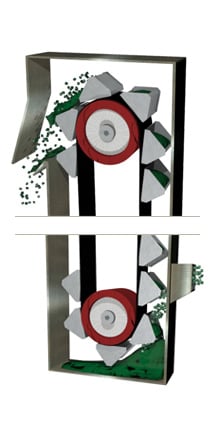
Figure 1 shows the loading and discharge action of a continuous style bucket elevator
In contrast, centrifugal elevators operate at much higher speeds, scooping material from the boot and throwing it via centrifugal force into the discharge chute as buckets pass over the head pulley (see Figure 2).
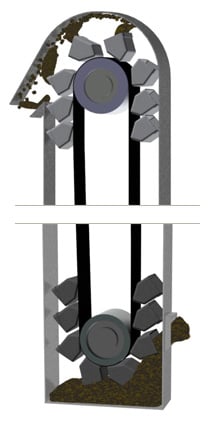
Figure 2 shows the loading and discharge action of a centrifugal style bucket elevator
If the material to be handled cannot suffer degradation or is fragile, it is best handled in a continuous-style elevator. If material degradation is not a concern, a centrifugal elevator may provide a better option.
Do I need a belt or chain bucket elevator?
Elevators are available in either a belt or chain configuration, referring to the material onto which the buckets are mounted (see Figure 3).
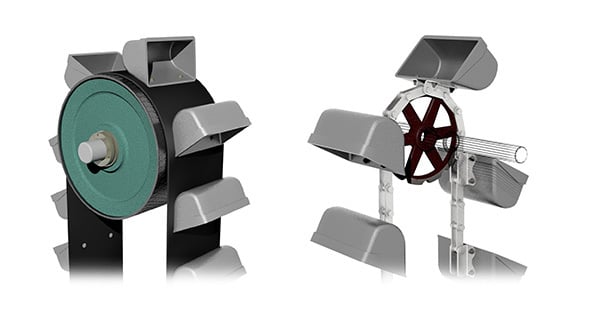
Figure 3 illustrates a centrifugal style elevator with buckets mounted on a belt (left) and chain (right)
The choice between a belt or chain elevator is dependent on the material being handled, with particle size, material temperature, and potential for corrosion being important factors. Materials with a large particle size can become trapped between buckets and the mounting belt causing damage, and therefore are best handled with chains. Hot materials are also better left to chain handling, as they could damage the belt. Corrosive materials will degrade chains, making belts the material of choice for handling such materials.
The intended capacity also plays into the choice between a belt and chain. While belts and chains are generally comparable in terms of capacity, single chain elevators can be upgraded to a double chain design in order to increase an elevator’s throughput.
Does my chain-type bucket elevator need chain guides?
Years ago, chain guides were a common feature on bucket elevators, helping to prevent any side-to-side or back-and-forth movement of the chain in the casing which could allow buckets to hit the casing. The image below shows chain guides incorporated into bucket elevator casing.
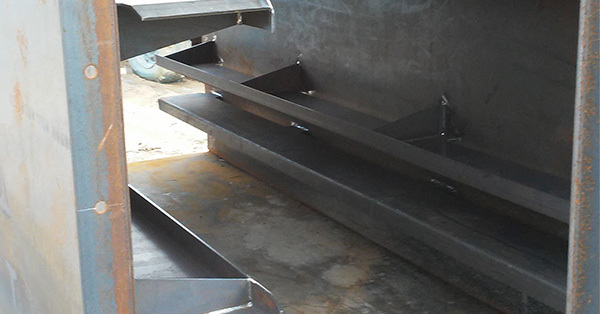
Chain guides incorporated into bucket elevator casing
However, chain machining and tolerances have improved to the point that modern chains have much less slack, making chain guides largely obsolete. Chain guides are still available for those that prefer to use them, but they are generally not necessary. FEECO adds additional clearance in the casing to mitigate the risk of bucket contact altogether.
What is the best bucket material of construction for my needs?
Elevator buckets can be constructed from a wide range of different materials depending on the anticipated duty of the bucket and any specific challenges associated with the material to be handled.
Carbon steel is a common choice for general use, large-capacity applications, or when working with hot materials. It can also be fitted with an abrasion-resistant (AR) lip for use in abrasive applications.
HDPE is a cost-effective option for general use applications handling materials that are low in temperature and abrasivity.
Ductile iron is a good fit for especially heavy-duty or highly abrasive materials. Urethane is an excellent option for non-stick applications.
When corrosion is a concern, stainless steel provides a suitable option. Nylon provides protection not only from corrosion, but also against abrasion and temperatures up to 275° F.
How do I select a bucket elevator manufacturer?
In selecting a bucket elevator manufacturer, look for a company with a proven track record; ask for project profiles and reference lists. Since bucket elevator manufacturers often specialize in a particular industry, it’s important to take care in selecting a manufacturer that can engineer an elevator around the specific requirements and challenges of the project and material at hand – not one that will try to make their design fit.
As a poorly engineered or fabricated bucket elevator can be rife with issues and risks premature failure, inquire about quality records and fabrication procedures. Also be sure to select a manufacturer that will provide parts and service support after the sale.
Conclusion
Bucket elevators provide high-capacity vertical handling in a range of settings. With plenty of options and configurations, determining whether a bucket elevator is a good fit for a given application and finding answers to the many questions that come up during the selection process can be a challenge.
FEECO is an expert in bulk solids handling and can size and design a custom bucket elevator for maximum efficiency and longevity. Our customer service team can also provide spare parts, inspect elevators, and repair them. For more information on our bucket elevators or services, contact us today!



